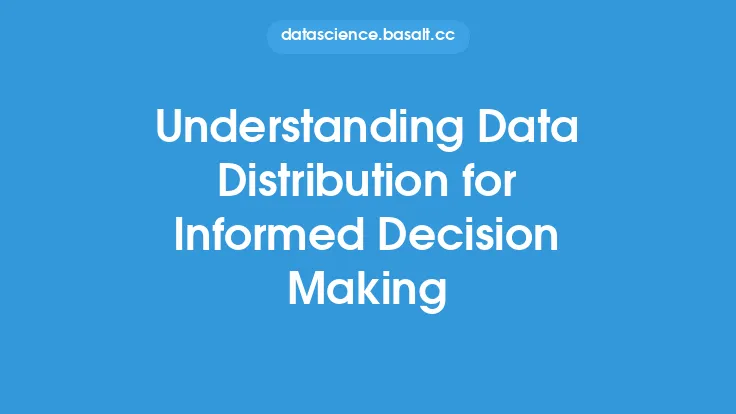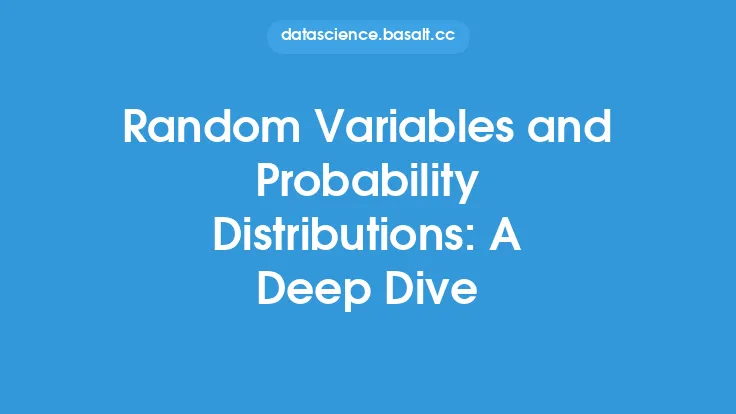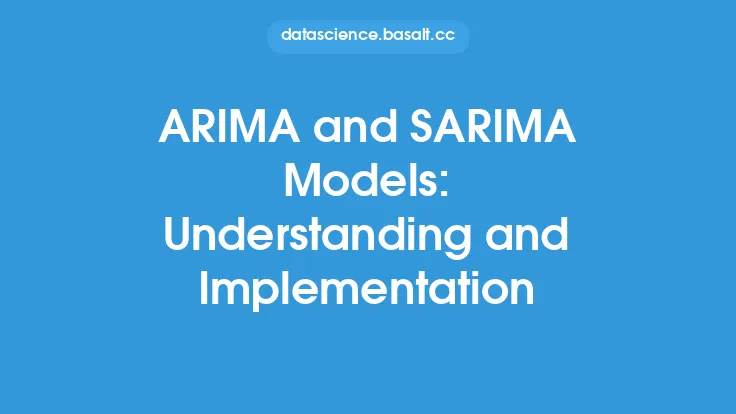Probability density functions (PDFs) and cumulative distribution functions (CDFs) are fundamental concepts in probability theory, which is a crucial branch of statistics. These functions provide a mathematical description of the probability distribution of a random variable, allowing us to model and analyze real-world phenomena. In this article, we will delve into the details of PDFs and CDFs, exploring their definitions, properties, and applications.
Introduction to Probability Density Functions
A probability density function (PDF) is a non-negative function that describes the probability distribution of a continuous random variable. The PDF, denoted as f(x), assigns a non-negative value to each point in the sample space, representing the relative likelihood of the random variable taking on that value. The PDF satisfies two important properties: (1) it is non-negative, meaning that f(x) ≥ 0 for all x, and (2) it integrates to 1 over the entire sample space, meaning that ∫f(x)dx = 1. The PDF can be thought of as a "density" function, where the area under the curve represents the probability of the random variable falling within a given range.
Introduction to Cumulative Distribution Functions
A cumulative distribution function (CDF) is a function that describes the probability distribution of a random variable, either discrete or continuous. The CDF, denoted as F(x), represents the probability that the random variable takes on a value less than or equal to x. The CDF satisfies three important properties: (1) it is non-decreasing, meaning that F(x) ≤ F(y) for all x ≤ y, (2) it is right-continuous, meaning that F(x) = lim(h → 0+) F(x + h), and (3) it satisfies the limits F(-∞) = 0 and F(∞) = 1. The CDF can be thought of as a "cumulative" function, where the value at each point represents the probability of the random variable falling below that point.
Relationship Between PDFs and CDFs
For a continuous random variable, the PDF and CDF are intimately related. The CDF can be obtained from the PDF by integration, specifically F(x) = ∫(-∞^x) f(t)dt. Conversely, the PDF can be obtained from the CDF by differentiation, specifically f(x) = dF(x)/dx. This relationship allows us to switch between the PDF and CDF representations of a probability distribution, depending on the context and application.
Properties of PDFs and CDFs
PDFs and CDFs have several important properties that are useful in probability theory and statistics. For example, the expected value of a random variable can be computed using the PDF, specifically E(X) = ∫xf(x)dx. The variance of a random variable can also be computed using the PDF, specifically Var(X) = ∫(x - E(X))^2 f(x)dx. The CDF can be used to compute probabilities of events, such as P(X ≤ x) = F(x). The CDF can also be used to compute quantiles, such as the median or percentiles, which are important in data analysis and statistics.
Common PDFs and CDFs
There are several common PDFs and CDFs that are widely used in probability theory and statistics. For example, the uniform distribution has a PDF f(x) = 1/(b - a) for a ≤ x ≤ b, and a CDF F(x) = (x - a)/(b - a) for a ≤ x ≤ b. The normal distribution has a PDF f(x) = (1/√(2πσ^2)) \ exp(-((x - μ)^2)/(2σ^2)), and a CDF F(x) = Φ((x - μ)/σ), where Φ is the standard normal CDF. The exponential distribution has a PDF f(x) = λ \ exp(-λx) for x ≥ 0, and a CDF F(x) = 1 - exp(-λx) for x ≥ 0. These distributions are important in modeling real-world phenomena, such as measurement errors, natural phenomena, and failure times.
Applications of PDFs and CDFs
PDFs and CDFs have numerous applications in probability theory, statistics, and data science. For example, they are used in hypothesis testing, confidence intervals, and regression analysis. They are also used in machine learning, signal processing, and image analysis. In finance, PDFs and CDFs are used to model stock prices, portfolio risk, and option pricing. In engineering, PDFs and CDFs are used to model failure times, reliability, and quality control. In medicine, PDFs and CDFs are used to model disease progression, treatment outcomes, and patient survival.
Conclusion
In conclusion, probability density functions and cumulative distribution functions are fundamental concepts in probability theory, providing a mathematical description of the probability distribution of a random variable. Understanding PDFs and CDFs is crucial in statistics, data science, and many fields of application. By mastering these concepts, we can model and analyze real-world phenomena, make informed decisions, and solve complex problems. Whether you are a student, researcher, or practitioner, PDFs and CDFs are essential tools in your toolkit, and their applications continue to grow and expand into new areas of research and practice.





